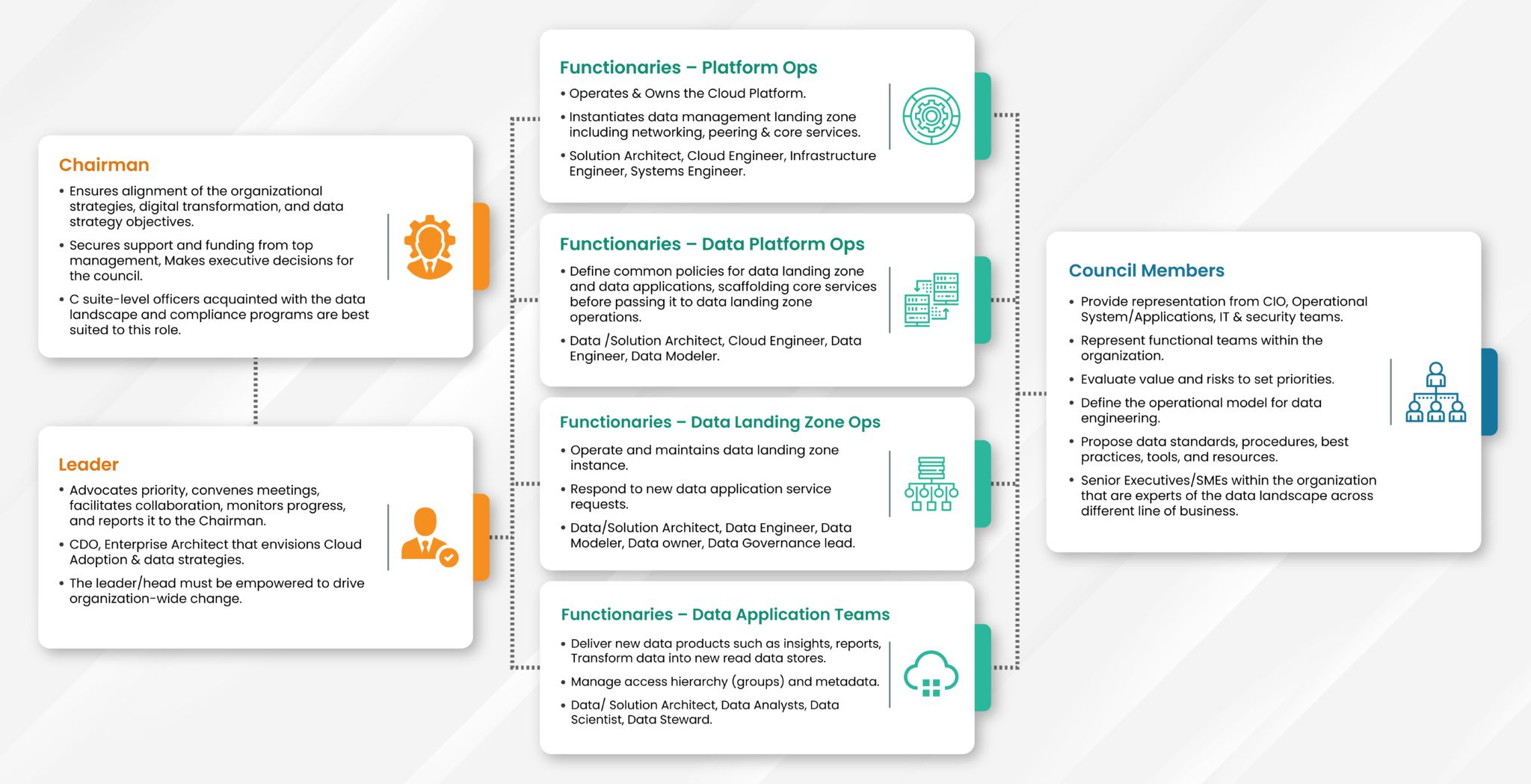At the center of Industry 4.0 (4IR), is the generation of data in high volumes from a variety of data sources, all at varying velocities. Without an efficient cloud-data framework, industries will continue to face ever-mounting data management challenges. That’s where a Cloud Data Engineering Council (CDEC) can help.
The Cloud Data Engineering Council (CDEC) is a regulatory body within an organization that steers the data engineering capabilities in alignment with the organization’s data strategy and cloud adoption initiatives. The CDEC of a given organization eases the journey to the cloud by providing scalable, repeatable frameworks advocated by major cloud-tech providers. It also makes sure that the organization meets its own needs for building modern tech platforms.
A well-regulated cloud-adoption approach means:
- Accelerated time to market with an optimized total cost of ownership
- Effective monitoring for threat protection, avoiding resource contention
- Improved business continuity with disaster recovery & high availability
- Data Analytics & Machine Learning at scale
- Democratized/Open or Self-Serve Data platforms that minimize silos
- Reduced operational burden with Dev-Ops
How can a Cloud Data Engineering Council create business value?
A large-scale manufacturing company based out of the US is one of Tiger’s partners. They are a leading provider of precision silicon components to the trillion-dollar global electronics industry.
The pandemic along with a global chip shortage forced the client to rapidly take on large-scale cloud data initiatives. At their core, the organization is focused on manufacturing and so their data infrastructure was relatively low. They needed to instantiate data platforms at a lightning-fast pace to address their business challenges effectively.
Tiger’s way of conceptualizing, inaugurating, and nurturing a Cloud Data Engineering Council within the manufacturing organization enabled it to:
- Build successful data-driven business solutions (such as Demand capacity planning, Part validation, Labor Efficiency, Scrap & Yield Analysis, etc.) consistently with a structured strategy for Cloud Adoption. We recommended they do enterprise-level planning.
- Remain sustainable with the rapid evolution of On-premise vs Cloud vs Hybrid models in an optimized way in terms of people, process, and technology.
- Stay equipped with the right set of tools for cost management, resource planning, and utilization, scaffolding templates, and best practices.
Creating business impact with a CDEC
Across sectors, as businesses continue to grapple with accelerating data volumes in their data management journeys, a CDEC can be a key asset that helps:
- Device ways to reduce IT budgets, and avoid redundant spending on meeting data and security/compliance needs.
- Formulate flexible, democratized ways to obtain and maintain data through cloud platforms and enable the usage of data across the enterprise.
- Provide increased security and come up with ways to maintain compliance, derive policies on data encryption, data access, data sharing, access permits of the data, etc.
- Define ways to ensure cost-effective usage of enterprise-level cloud resources.
- Create a common and transparent data model.
- Define ‘Cloud Economics’ – wherein complete visibility on the total cost of ownership for cloud computing is enabled and the benefits of cloud computing over on-premises models are continuously measured.
- Define and manage processes, KPIs, metrics, and plans to ensure increased adoption of enterprise-level cloud modernization plans.
Setting up a CDEC
Step 1: Defining the Goals for the CDEC
A CDEC in an organization will
- Serve data as a product, rather than a byproduct.
- Provide an ecosystem of data products, rather than a singular data warehouse.
- Formulate and perform a default approach to enforce data governance and security.
- Drive teams to consistently prioritize business outcomes by removing the need to focus on the underlying technology.
Step 2: Setting up a Task Force

Step 3: Driving Data Management Strategies Within the Organization
The CDEC will be responsible for building a comprehensive data strategy and will help the organization adopt a data-driven approach. It will define and develop a plan for cloud adoption framework with key design area considerations like enterprise enrolment, networking, identity and access management, policies, business continuity, and disaster recovery. As a governing body it will:
- Manage the platform in terms of provisioning and observability
- Secure the data platform with authentication and authorization, data privacy, and data access management.
- Organize people and teams focusing on effective operations, roles, and functions
With 4IR ushering in a new wave of change, organizations across the world are having to rapidly reassess their data infrastructure to meet increased volumes of data. Enterprise-level cloud modernization plans can add pressure on the leadership to increase IT spends. A Cloud Data Engineering Council becomes a core business need because it not only helps in streamlining IT costs but it can also drive data management, enforce security policies and meet compliance needs.





